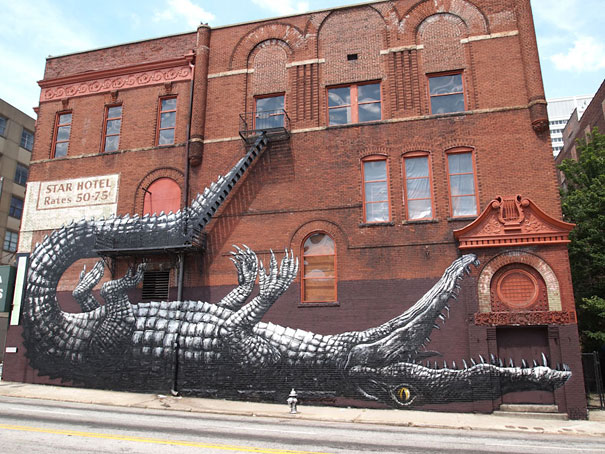Explore the vibrant world of street art, a dynamic form of visual arts that transforms urban spaces and reflects cultural and social commentary.
Street art has emerged as a powerful form of visual arts and cultural expression, transforming urban spaces into vibrant canvases that reflect the pulse of a city. Street art has evolved from its rebellious roots into a respected form of public art, embraced by both artists and communities for its ability to provoke thought, beautify neighborhoods, and challenge the status quo. Today, street art is celebrated in cities across the globe, attracting tourists, inspiring local pride, and serving as a platform for artists to voice their perspectives on contemporary issues.
The History and Evolution of Street Art
Understanding the evolution of street art provides insight into its current significance as a cultural movement and a form of visual expression.
Early Beginnings: Graffiti as Rebellion

Street art traces its origins back to the graffiti movement of the 1960s and 70s, where it was primarily used as a form of rebellion and self-expression among marginalized communities. In cities like New York and Philadelphia, graffiti became a way for young people to make their voices heard in an era of social unrest.
- Political and Social Commentary: Graffiti served as a form of protest against social and political issues, reflecting the frustrations and hopes of disenfranchised youth.
- Subway Art Movement: In New York City, the subway system became a canvas for graffiti artists, leading to the development of distinct styles and techniques that defined the early street art scene.
The Emergence of Modern Street Art

In the 1980s and 90s, street art began to evolve beyond graffiti, incorporating a wider range of techniques and styles, including stenciling, wheat-pasting, and large-scale murals. This period marked the transition from underground subculture to a more widely recognized and respected art form.
- Influence of Urban Landscapes: As street art moved from subways to city streets, artists began to use urban landscapes as their canvas, creating site-specific works that interact with their surroundings.
- From Vandalism to Art: Over time, perceptions of street art shifted, with many cities and galleries recognizing its artistic value and cultural significance.
The Cultural Impact
Street art plays a significant role in shaping cultural identity and fostering a sense of community. It is a powerful tool for storytelling, activism, and urban renewal.

Visual Storytelling and Cultural Expression
Street art is a form of visual storytelling that allows artists to communicate their experiences, beliefs, and emotions. Through murals, graffiti, and installations, street artists bring to life the histories, cultures, and struggles of the communities they represent.
- Community Engagement: Many street artists work closely with local communities to create works that reflect their collective identity and aspirations. This collaborative approach helps to strengthen community bonds and promote cultural heritage.
- Social and Political Commentary: Street art often addresses social and political issues, serving as a platform for activism and advocacy. Artists use their work to raise awareness about topics such as inequality, climate change, and human rights.
Urban Renewal and Place-Making
Street art has the power to transform neglected urban spaces into vibrant cultural hubs. By revitalizing public areas, street art contributes to urban renewal and helps create a sense of place and belonging.
- Enhancing Public Spaces: Murals and installations can beautify otherwise dull or decaying areas, attracting tourists and fostering local pride.
- Economic Impact: Street art can boost local economies by attracting visitors, supporting local businesses, and creating opportunities for artists.
Contemporary Trends
Today, street art continues to evolve, incorporating new styles, mediums, and technologies. Contemporary street artists are pushing the boundaries of what can be achieved in public spaces, making street art an ever-changing and dynamic field.
Digital and Augmented Reality Street Art
With advancements in technology, digital and augmented reality (AR) street art is becoming increasingly popular. These innovative works blend traditional street art with digital elements, creating interactive experiences for viewers.
- Interactive Murals: Artists are using AR to create murals that come to life when viewed through a smartphone or tablet, adding a new dimension to street art.
- Projection Mapping: This technique involves projecting digital images onto buildings and public spaces, transforming them into dynamic canvases for digital art.
Environmental and Sustainable Street Art

Many contemporary street artists are incorporating themes of sustainability and environmental awareness into their work. Using eco-friendly materials and techniques, these artists aim to promote environmental stewardship and encourage viewers to reflect on their impact on the planet.
- Eco-Friendly Materials: Some artists use biodegradable paints and natural materials to minimize their environmental footprint.
- Climate Activism: Street art addressing climate change and environmental degradation is becoming more prevalent, using public spaces to raise awareness and inspire action.
Conclusion
Exploring the vibrant world of street art offers a unique perspective on visual arts and culture. From its rebellious roots in graffiti to its current status as a respected art form, street art continues to evolve and captivate audiences around the globe. By transforming public spaces and engaging communities, street art remains a powerful tool for cultural expression and social commentary. Whether you’re an art enthusiast, a traveler, or a curious observer, discovering street art in its many forms provides a deeper understanding of the cities and cultures that embrace this dynamic form of expression.
